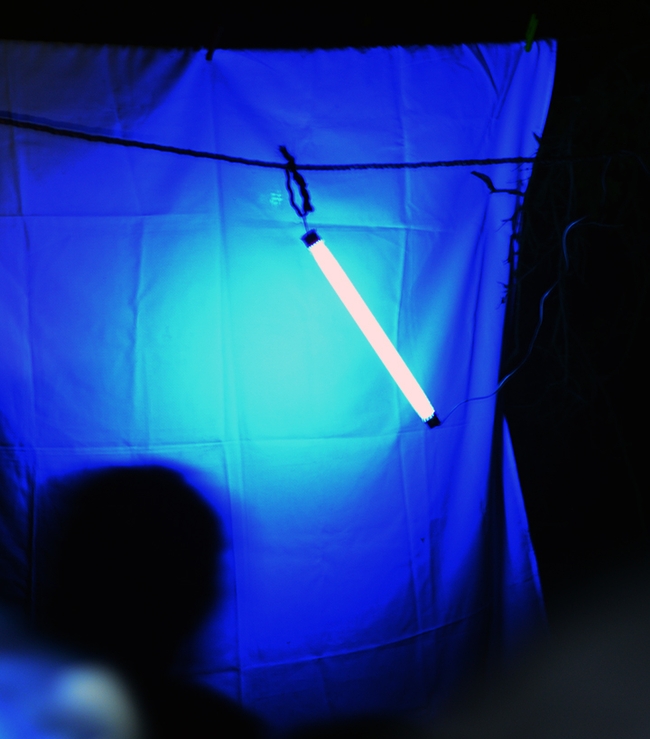The insects, that is.
Bohart Museum of Entomology research associate John "Moth Man" De Benedictus and colleagues set up a blacklighting display during the Bohart's annual Moth Night, held July 20, hoping to find a diversity of moths and other night-flying insects.
"We saw just three species," he said, listing them as:
- Pelochrista eburata, a tortricid moth with no common name
- Platynota stultana, a tortricid known as the Omnivorous Leafroller Moth, and
- Ephestiodes gilvescentella, a pyralid moth known as the Dusky Raisin Moth.
Entomologists study and collect nocturnal insects with blacklighting. They hang a white sheet, affix an ultraviolet light, and await the arrival of moths, beetles and other insects drawn to the light.
What else arrived from 10 to 11 p.m.? "Numerous small flies, a couple of earwigs, a large longhorn beetle (probably Prionus californicus), and a few green lacewings," he reported.
In comparison, the 2019 Moth Night resulted in these finds:
Family Tineidae:
Opogona omoscopa (Opogona crown borer)
Family Tortricidae:
Clepsis peritana
Platynota stultana (omnivorous leafroller)
Cydia latiferreana (filbertworm)
Family Pyralidae:
Achyra rantalis (garden webworm)
Ephestiodes gilvescentella (dusky raisin moth)
Cadra figuliella
Family Geometridae:
Digrammia muscariata
Family Noctuidae:
Spodoptera exigua (beet armyworm)
Spodoptera praefica (western yellow-striped armyworm)
Parabagrotis formais
De Benedictus has blacklighted for 37 years. His moth collection of some 600 species from the Stebbins Cold Canyon Reserve and 300 species from his backyard in Davis is housed in the Bohart Museum.
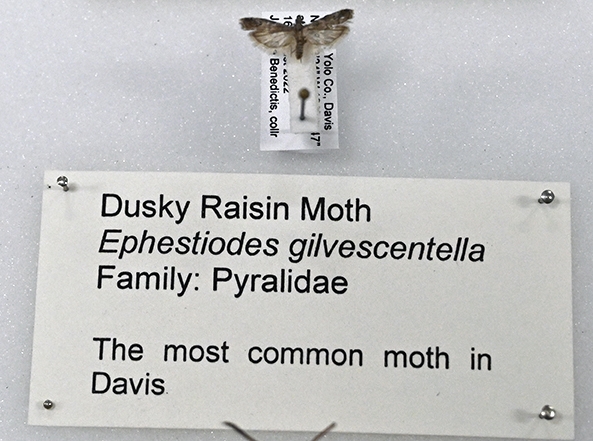
De Benedictus displayed his collection that includes the Dusky Raisin Moth, "the most common moth in Davis," he said. It's been recorded not only in California and Arizona, but in Oklahoma, Utah, Montana, Alberta an British Columbia. The moth is so named because its larvae feed on raisins (as well as prunes, walnuts, yeast and the like).
De Benedictus, who holds a master's degree in entomology (1998) from UC Berkeley, studied with major professor and noted entomologist Jerry Powell (1933-2023).
"Jerry Powell once estimated that there are about 17,000 North American butterflies and moths," De Benedictus commented. "I would not be surprised if it's closer to 20,000."
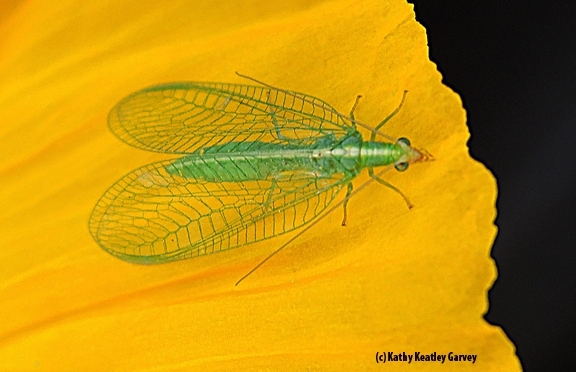
Every year De Benedictus helps coordinates the "Mid-Winter Lepidopterist Gatherings," a legacy of Powell. The gatherings are traditionally held annually at either the Essig Museum or the Bohart Museum "for colleagues to exchange information on moths and butterflies."
The Bohart Museum, located in Room 1124 of the Academic Surge Building, 455 Crocker Lane, is the home of a global collection of eight million insect specimens, plus a live petting zoo and a gift shop. Director is Professor Jason Bond, the Evert and Marion Schlinger Endowed Chair, UC Davis Department of Entomology and Nematology, and associate dean, Agricultural Sciences, UC Davis College of Agricultural and Environmental Sciences.
More information is available on the website at https://bohart.ucdavis.edu or by emailing bmuseum@ucdavis.edu.
Attached Images:
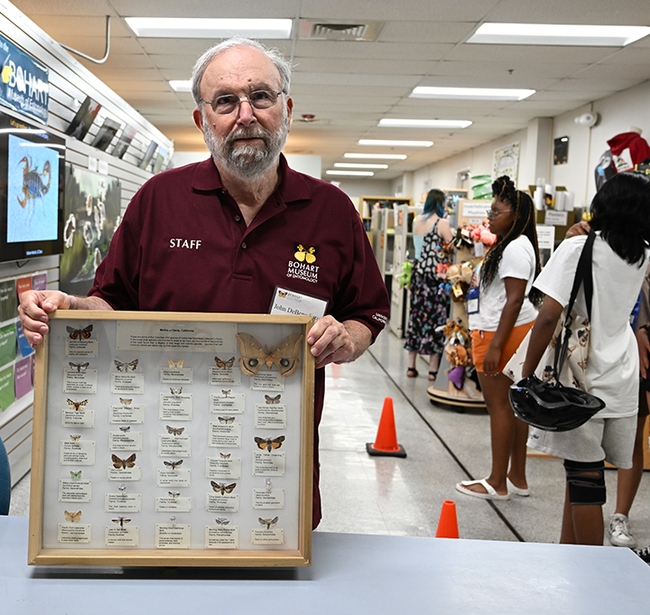
John "Moth Man" DeBenedictus, a research associate at the Bohart Museum of Entomology, showed part of his moth collection at the Bohart open house. (Photo by Kathy Keatley Garvey)
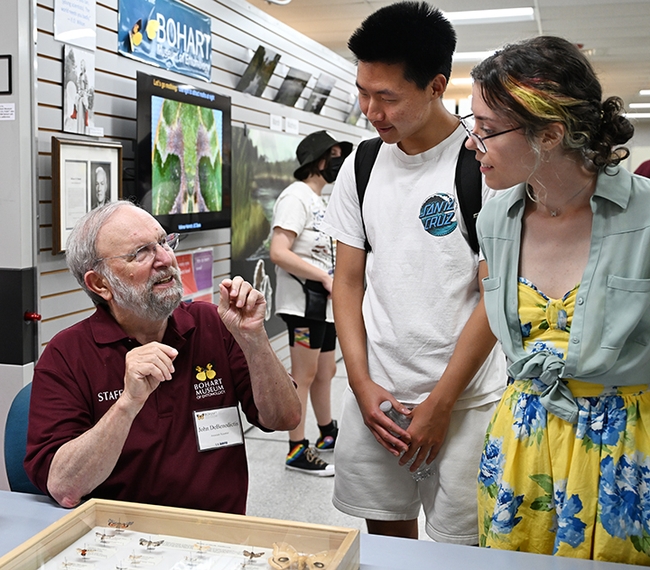
John "Moth Man" DeBenedictus, answers questions at the Bohart Museum of Entomology Moth Night. (Photo by Kathy Keatley Garvey)
